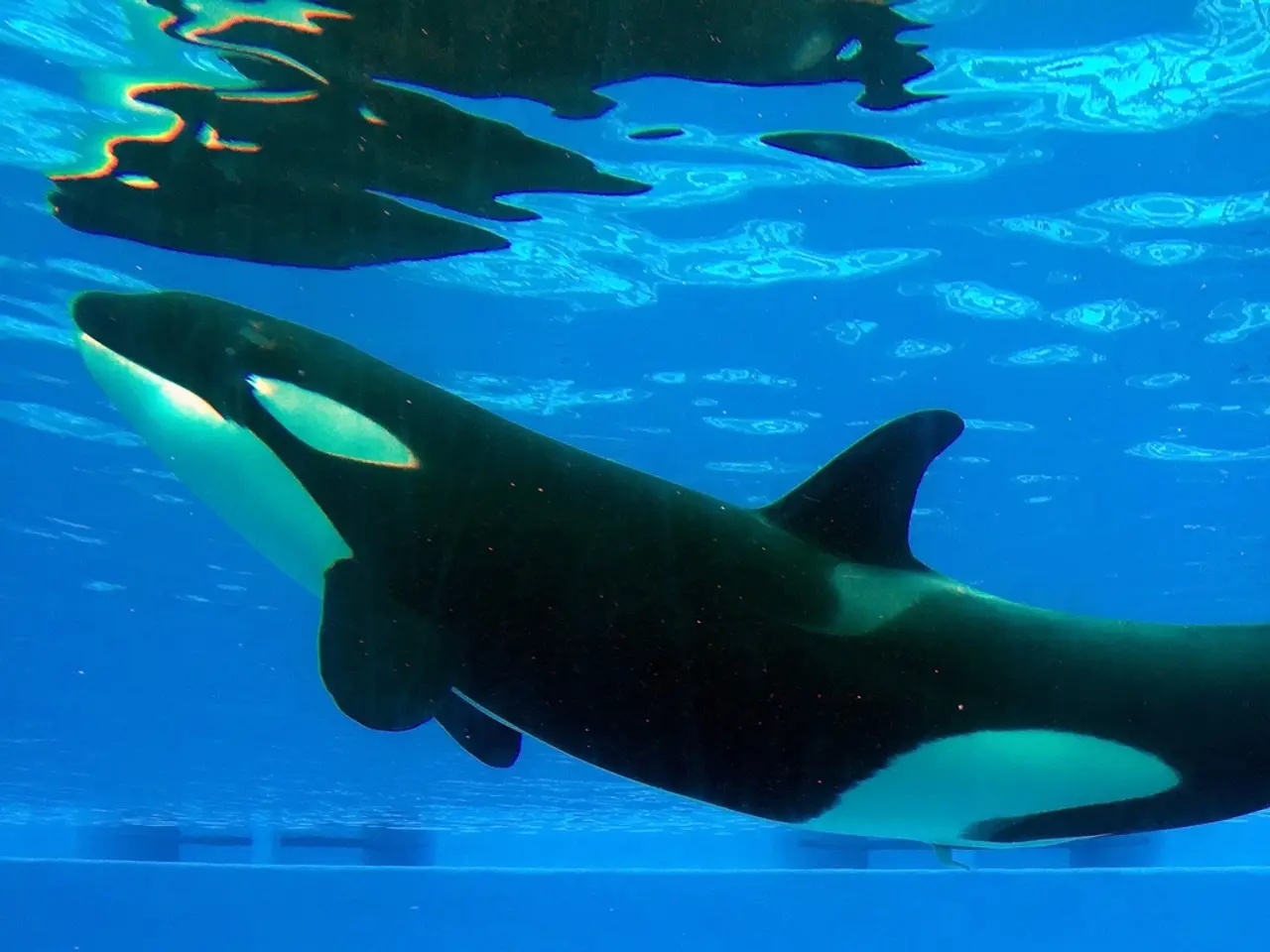First Spotted: Bowhead Whale in Southeast Alaska's Waters
In a groundbreaking discovery, a team of scientists working in Sitka Sound, Alaska, observed a bowhead whale in March 2024, marking the first documented sighting of this Arctic species in Southeast Alaska [1]. This sighting, only the second recorded in this region, has provided valuable insights into the migration patterns of Arctic species, particularly bowhead whales, as they adapt to changing environmental conditions.
The bowhead whale, a resident of Arctic and sub-Arctic waters, is easily identifiable by its unique features. Unlike its North Pacific right whale counterpart, the bowhead whale does not have callosities [2]. It is also recognizable by its lack of a dorsal fin, a narrow, arched upper jaw, paddle-shaped pectoral flippers, a black body, white chin patches, and some white coloring on the peduncle [6].
Initially, the crew mistook the whale for a humpback whale due to its small size and distinct arch in its jaw. However, upon closer examination and with the help of photographs, experts were able to confirm the identification [3]. The whale was observed but didn't hear any vocalizations, and the crew only managed to take two photos before it submerged [3].
This sighting is significant because it highlights potential changes or expansions in migration routes possibly linked to environmental shifts such as sea ice loss and changing ocean conditions [5][4]. Traditionally, bowhead whales migrate along established routes connected to ice edges and feeding grounds. However, the unprecedented sighting in Southeast Alaska suggests that some individuals may be moving further south or exploring new habitats [4].
This aligns with findings that bowhead whales have persisted in Arctic waters for over 11,700 years but face challenges due to sea ice loss, which affects their distribution and migration [4]. Such knowledge is critical for monitoring species' resilience, adapting conservation efforts, and predicting future shifts in Arctic biodiversity linked to climate change [4][5].
This discovery also emphasizes the importance of public outreach to recognize bowhead whales' distinctive features. Kim Shelden, a marine biologist at the Alaska Fisheries Science Center's Marine Mammal Laboratory, underscores this point [1].
Moreover, this sighting is a testament to the value of Indigenous Knowledge in Alaskan communities. Indigenous Knowledge holders in Sitka and Utqiagvik provided valuable insights during the bowhead whale sighting [7].
Additional sightings of the whale were reported over the next month, but no feeding or social behaviors were noted [3]. This sighting serves as an indicator of rapid changes occurring in the Arctic and emphasizes the need for continued research and monitoring.
This discovery also carries implications for federal law under the Marine Mammal Protection Act and the Endangered Species Act, co-management agreements, and enabling responsible ocean development [1]. The loss of sea ice in polar regions will impact many species that depend on ice for survival, making information about the movements of bowhead whales crucial.
Currently, four populations of bowhead whales are recognized as stocks for management purposes, with two of these stocks occurring in the North Pacific [2]. As the Arctic continues to change, it is essential to understand how these species are adapting to ensure their survival and the preservation of Arctic biodiversity.
References: 1. Alaska Public Media 2. NOAA Fisheries 3. SeaWatch 4. Polar Research 5. Science Advances 6. National Geographic 7. Indigenous Knowledge Portal
- The significant discovery of a bowhead whale in Southeast Alaska highlights the need for education and self-development in recognizing endangered species like this Arctic species.
- As the field of science evolves, the importance of technology in gathering and analyzing data, such as in the case of the bowhead whale sighting, becomes increasingly crucial in environmental-science research.
- With the bowhead whale's movement towards Southeast Alaska, general news about its changes in migration patterns can impact both the conservation and finance sectors, affecting space-and-astronomy research and even lifestyle decisions.
- As the bowhead whale's presence in Southeast Alaska indicates potential shifts in environmental conditions, it calls for ongoing collaboration between Indigenous communities, scientists, and policymakers for space-and-astronomy, environmental-science, and education-and-self-development purposes.
- The unveiling of the bowhead whale's journey in the sports section of newspapers can spark public interest, bringing awareness to medical-conditions faced by endangered species like bowhead whales and the pressing need for conservation efforts.




